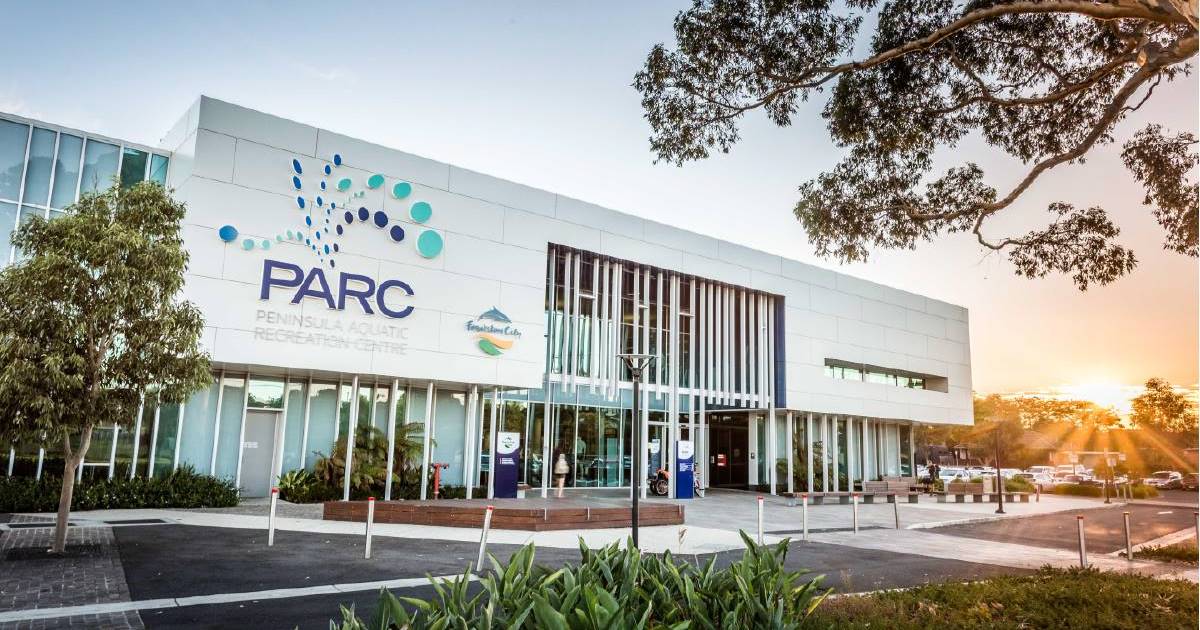
A rooftop solar power system installed atop an aquatic center in the Melbourne suburb of Frankston has given the local council’s total PV capacity a mighty boost.
Peninsula Aquatic Recreation Centre (PARC) is a really busy place, welcoming more than a million visitors a year. With four pools (one heated to 34 degrees), a gym, exercise studios, spa, sauna and other facilities, PARC is also a big energy user.
Some of that energy will now be provided from the facility’s rooftop courtesy of a 523 kilowatt solar system – it’s one of the largest rooftop PV systems in the Frankston local government area1. As well as slashing PARC’s energy bills, the new addition will avoid an estimated 614 tonnes of greenhouse gas emissions annually. Payback on the system is expected to be achieved in 8 years.
In addition to the PARC project, the finishing touches are also being put on a system on the rooftop of the Frankston Civic Centre (capacity not mentioned). These aren’t the first systems racked up for Council. The organisation had installed solar panels on more than 60 of its buildings by June 2022, at which point Council’s total PV capacity was more than 600kW. Add to that these latest projects and capacity may have more than doubled.
“The solar projects are key actions in Council’s Towards Zero Emissions Plan and will help to reduce Council’s emissions and contribution to climate change,” said South Ward Cr Claire Harvey.
Climate Change Strategy And Action Plan
Frankston City Council declared a climate emergency in November 2019. It’s one of more than a hundred local governments across the country to have done so. This action appeared to be strongly backed by the local community, with a survey in 2020 indicating 80% of community respondents were ‘extremely’ or ‘very concerned’ about the impacts of climate change.
The organisation currently has a target of 2025 for reaching carbon neutrality. In 2021-22, its net greenhouse gas emissions were 9,012 tonnes of carbon dioxide equivalent (tCO2e) – a 1,408 tonne (or 13.5%) decrease on the previous year. The largest contributors to Council’s emissions in 2021-22 were building electricity and gas use (58%).
Frankston City Council is currently developing a new Climate Change Strategy and Action Plan, and community feedback is encouraged. The draft plan mentions Council intends to further increase its solar power capacity (plus battery storage where feasible) and to continue to purchase electricity from renewable energy sources. The organisation has a 10-year Power Purchase Agreement (PPA) with Bald Hills Wind Farm, which is situated near Tarwin Lower in South Gippsland. The arrangement covers the electricity use of five major facilities.
Across Frankston, solar panels are a pretty common sight on the rooftops of homes and businesses as well as on Council buildings. More than 4,848 small-scale systems under 100kW capacity had been installed by the end of October this year, with a collective capacity of 23,065 kW.
Frankston City Council is keen to see more panels on rooftops across the community. The draft plan also mentions it will investigate, support and implement initiatives to enable the community to make their homes and other buildings more energy efficient, to switch to all electric appliances, and install solar power systems.
Footnotes
- Among larger arrays is a 1.5MW PV system installed on the rooftop of Vicinity Centres’ Bayside shopping centre, which has been operational since 2019 ↩

 RSS - Posts
RSS - Posts



Speak Your Mind